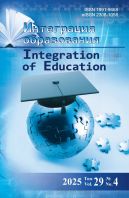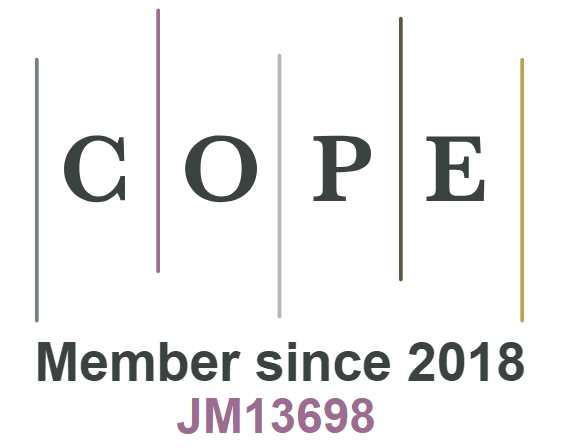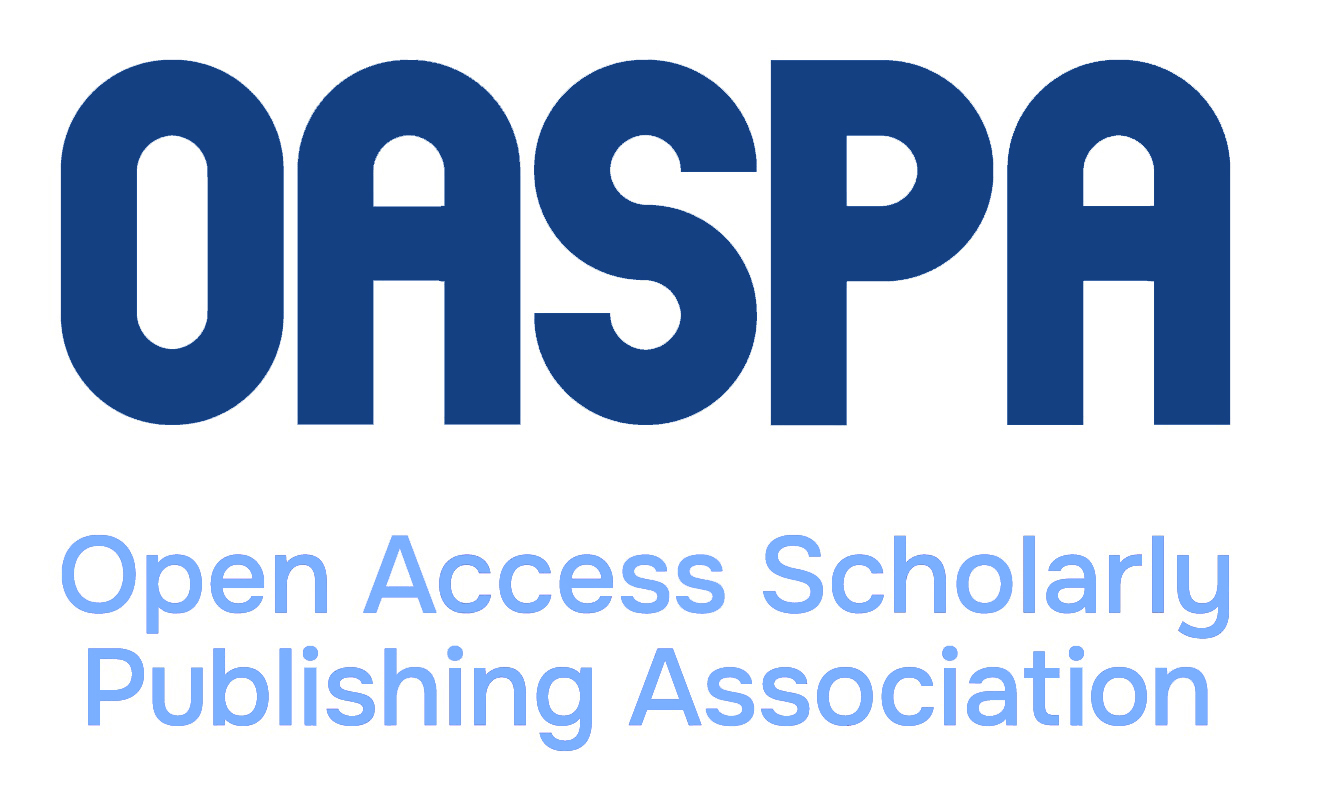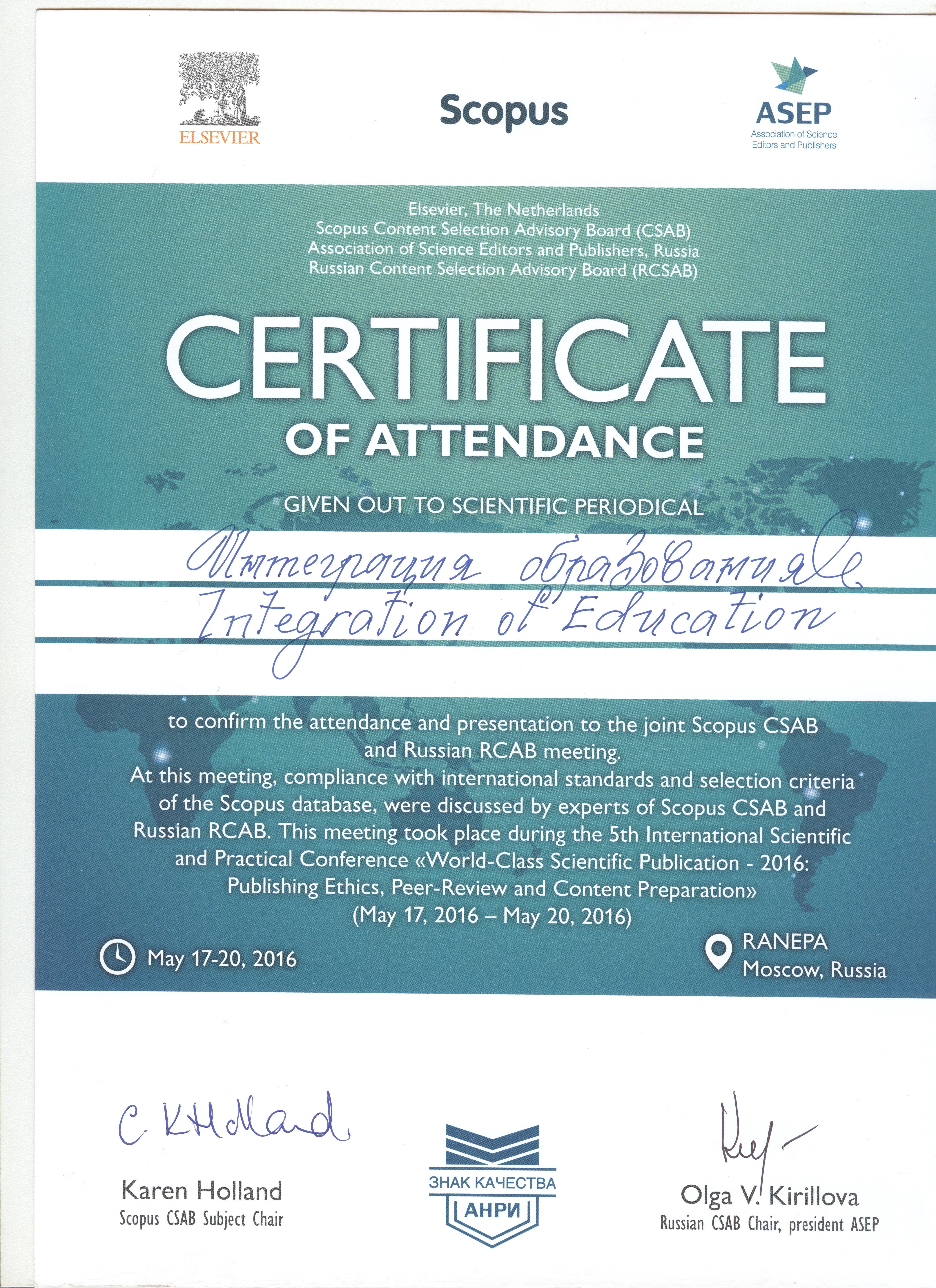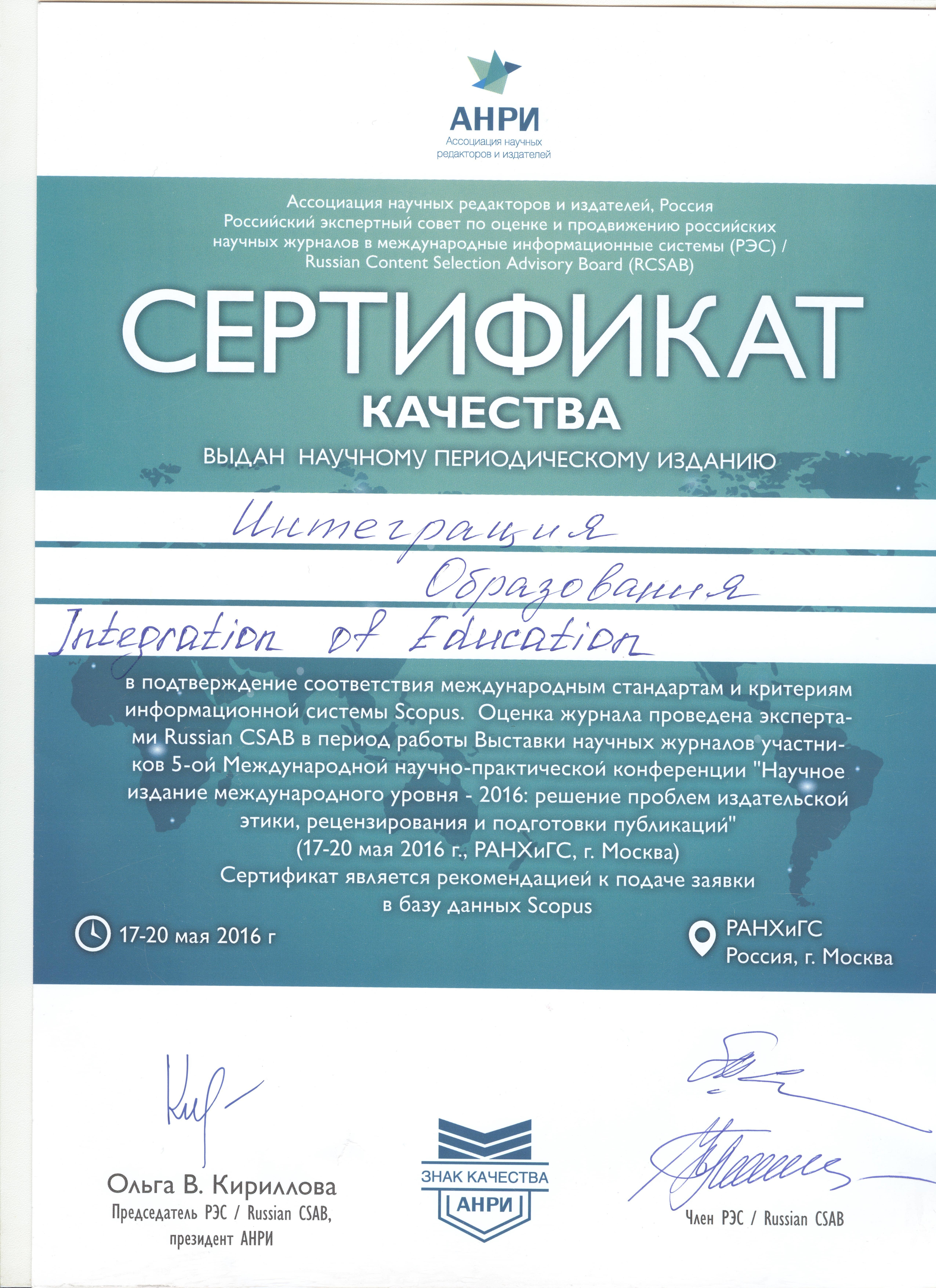DOI: 10.15507/1991-9468.029.202501.068-080
UDC 316.6:159.923-057.875
Semantic Characteristics of the Internal Psychological Context as an Indicator of Student Personal Development
Tatiana S. Vershinina
Cand.Sci. (Philol.), Associate Professor, Associate Professor of Chair of Clinical Psychology and Educational Science, Ural State Medical University (3 Repin St., Yekaterinburg 620028, Russian Federation), ORCID: https://orcid.org/0000-0003-3022-9570, Researcher ID: D-5813-2016, SPIN-code: 3728-6999, This email address is being protected from spambots. You need JavaScript enabled to view it.
Natalia V. Zhukova
Dr.Sci. (Psychol.), Associate Professor, Professor at the Chair of General and Social Psychology, Ural Federal University named after the First President of Russia B.N. Yeltsin (19 Mira St., Yekaterinburg 620002, Russian Federation), ORCID: https://orcid.org/0000-0002-9863-257X, SPIN-code: 1893-1179, This email address is being protected from spambots. You need JavaScript enabled to view it.
Abstract
Introduction. Despite significant scholarly attention to factors and methods of student personal development, the interaction of external and internal contexts, and the semantic expression of a person’s psychological state, research identifying differences in internal psychological context based on the subjective semantics of a student’s speech act at different developmental stages is lacking. The aim of this study is to explore the dynamics of the internal psychological context as an indicator of student personal development at different stages of education, based on the analysis of semantic characteristics.
Materials and Methods. The study involved first-year and third-year students from two universities in Yekaterinburg (conducted between 2022 and 2023). The semantic characteristics of the students’ internal psychological context were analyzed using Kelly’s repertory grid method. The significance of the differences in results between student groups was demonstrated using Pearson’s χ² test. The respondents’ repertory grids were analyzed using the co-therapeutic computer system “KELLI,” descriptive statistics, and mathematical statistics (Statistica v. 12).
Results. The results revealed differences in the semantic characteristics of the internal psychological context in speech acts among students of different years of study. These differences are attributable to a unity of parameters: communication type, significant roles in the conjunction of real self/ideal self, and rigidly linked constructs. The identified characteristics demonstrate levels of personal development during different periods of study; these manifest in the specific lexical units used in closely related pairs of characteristics, the stylistic register of the lexicon, the focus of consciousness on others (presence/absence of ego-centrism in evaluating the actions of others), the degree of correspondence between the semantics of closely related pairs of characteristics and the national communicative cultural matrix, and the categorical/flexible nature of judgments and evaluations in interpersonal interaction.
Discussion and Conclusion. This research advances the theory of contextual education and contributes to understanding the subjective semantics of speech acts, reflecting the characteristics of the internal psychological context at different stages of a student’s personal development within the context of a university’s educational environment.
Keywords: context of educational environment of higher education institution, internal psychological context, student’s personal development, semantic characteristics, role significance, role pragmatics
Acknowledgments: The authors would like to thank the reviewers for their constructive comments and recommendations for revision of the article.
Conflict of interests: The authors declare no conflict of interest.
For citation: Vershinina T.S., Zhukova N.V. Semantic Characteristics of the Internal Psychological Context as an Indicator of Student Personal Development. Integration of Education. 2025;29(1):68–80. https://doi.org/10.15507/1991-9468.029.202501.068-080
Author’s contribution:
T. S. Vershinina – analyzing sources on the research topic; conducting the research; development of the research concept; writing the draft; critical analysis of the draft.
N. V. Zhukova – development of the research concept; critical analysis of the draft.
Availability of data and materials. The datasets used and/or analysed during the current study are available from the authors on reasonable request.
All authors have read and approved the final manuscript.
Submitted 24.07.2024;
revised 03.09.2024;
accepted 10.09.2024.
REFERENCES
- Abakumova I.V., Godunov M.V., Penkov D.V. Meaning-Building Strategies: Transition from Duality to Trialectics. Russian Psychological Journal. 2019;16(1):52–76. (In Russ., abstract in Eng.) http://doi.org/10.21702/rpj.2019.1.3
- Carapeto M.J., Feixas G. The Organization of Self-Knowledge in Adolescence: Some Contributions Using the Repertory Grid Technique. European Journal of Investigation in Health, Psychology and Education. 2020;10(1):408–423. https://doi.org/10.3390/ejihpe10010031
- Verbitsky A.A., Danilochkina V.V. Theoretical and Empirical Research of the Impact of Psychological Context Effects on Participants of Short-Term Business Negotiations. Psychological and Pedagogical Search. Academic Journal. 2021;(2):208–220. (In Russ., abstract in Eng.) EDN: BAAUZJ
- García-Jiménez J., Rodríguez-Santero J., Torres-Gordillo J.-J. Influence of Contextual Variables on Educational Performance: A Study Using Hierarchical Segmentation Trees. Sustainability. 2020;12(23):9933. https://doi.org/10.3390/su12239933
- Benz A. Epistemic Perspectives and Communicative Acts. Frontiers in Communication. 2021;6:612733. https://doi.org/10.3389/fcomm.2021.612733
- Haryanto P.Ch., Arty I.S. The Application of Contextual Teaching and Learning in Natural Science to Improve Student’s HOTS and Self-Efficacy. Journal of Physics: Conference Series. 2019;1233:012106. https://doi.org/10.1088/1742-6596/1233/1/012106
- Sokha K. Examine the Impact of Contextual, Personal, and Behavioral Factors on High School Teachers’ Engagement in Teaching Science Using an Integrated STEM Approach. International Journal of Science and Mathematics Education. 2024;22:1857–1883. https://doi.org/10.1007/s10763-024-10447-5
- Dubovickaya T.D., Zabolotnaya E.V. Scientific and Professional Thinking of Psychologists in the Context of Training of Highly Qualified Personnel. Pedagogy and Psychology of Education. 2022;(2):74–86. (In Russ., abstract in Eng.) https://doi.org/10.31862/2500-297X-2022-2-74-86
- Tari D.K., Rosana D. Contextual Teaching and Learning to Develop Critical Thinking and Practical Skills. Journal of Physics: Conference Series. 2019;1233:012102. https://doi.org/10.1088/1742-6596/1233/1/012102
- Zhao Y., Lin S., Liu J., Zhang J., Yu Q. Learning Contextual Factors, Student Engagement, and Problem-Solving Skills: A Chinese Perspective. Social Behavior and Personality. 2021;49(2):1–18. https://doi.org/10.2224/sbp.9796
- Constantino S.M., Schlüter M., Weber E.U., Wijermans N. Cognition and Behavior in Context: A Framework and Theories to Explain Natural Resource Use Decisions in Social-Ecological Systems. Sustainability Science. 2021;16:1651–1671. https://doi.org/10.1007/s11625-021-00989-w
- Nandy A., Nixon E., Quigley J. Communicative Functions of Parents’ Child-Directed Speech across Dyadic and Triadic Contexts. Journal of Child Language. 2021;48(6):1281–1294. https://doi.org/10.1017/S030500092000080x
- Kim H.-J. Socio-Cultural Development Approach to Investigate Teacher Learning across Two Contexts. Education Sciences. 2021;11(2):37. https://doi.org/10.3390/educsci11020037
- Yazdani S., Ross S. Carl Rogers’ Notion of “Self-Actualization” in Joyce’s A Portrait of the Artist as a Young Man. 3L: Language, Linguistics, Literature: The Southeast Asian Journal of English Language Studies. 2019;25(2):61–73. https://doi.org/10.17576/3L-2019-2502-05
- Weizenbaum E., Torous J., Fulford D. Cognition in Context: Understanding the Everyday Predictors of Cognitive Performance in a New Era of Measurement. JMIR mHealth uHealth. 2020;8(7):e14328. https://doi.org/10.2196/14328
- Sorokovykh G.V., Shafikova I.R. Notion of Professional’s Secondary Linguistic Personality in Domestic and Foreign Linguodidactics: Systematic Review. Pedagogy. Theory and Practice. 2020;5(4):419–424. (In Russ., abstract in Eng.) https://doi.org/10.30853/ped200101
- Bulgakov A.V. Semantic Analysis as an Express Method of Evaluating Risk Representations in Professional Activity. Bulletin of Moscow Region State University (e-journal). 2019;(4):88–103. (In Russ., abstract in Eng.) https://doi.org/10.18384/2224-0209-2019-4-979
- Vilzer A.M. The Semantics of Thinking and Systemic Reflection of a Human’s Thinking Activity in Solving Different Cognitive Problems. Healthcare, Education and Security. 2019;(2):67–76. (In Russ., abstract in Eng.) EDN: QSYTHU
- Zogaj A., Tscheulin D.K., Lindenmeie J., Olk S. Linking Actual Self-Congruence, Ideal Self-Congruence, and Functional Congruence to Donor Loyalty: The Moderating Role of Issue Involvement. Journal of Business Economics. 2021;91:379–400. https://doi.org/10.1007/s11573-020-01006-9
- Paz C., Aguilera M., Salla M., Compañ V., Medina J.C., Bados A., et. al. Personal Construct Therapy vs Cognitive Behavioral Therapy in the Treatment of Depression in Women with Fibromyalgia: Study Protocol for a Multicenter Randomized Controlled Trial. Neuro-Psychiatric Disease and Treatment. 2020;16:301–311. https://doi.org/10.2147/NDT.S235161
- Li M.-H., Lai I.K.W. Actual Self-Image Versus Ideal Self-Image: An Exploratory Study of Self-Congruity Effects on Gambling Tourism. Frontiers in Psychology. 2021;12:588190. https://doi.org/10.3389/fpsyg.2021.588190
- Wu Sh., Ren M., Pitafi A.H., Islam T. Self-Image Congruence, Functional Congruence, and Mobile App Intention to Use. Mobile Information Systems. 2020;2020(1):5125238. https://doi.org/10.1155/2020/5125238
- Yusupova L.G., Pesina S.A. The Formation of the Semantic Structure of the Polysemantic Word. Kazan Science. 2019;(3):75–78. (In Russ., abstract in Eng.) EDN: BUQQWO
- Paszkowska-Rogacz A., Kabzińska Z. Applications of Kelly’s Personal Construct Theory to Vocational Guidance. Psychology Research. 2012;2(7):408–421. Available at: https://files.eric.ed.gov/fulltext/ED535730.pdf (accessed 07.04.2024).
- Polyanina O.I., Baleva M.V., Shevkova E.V. Evaluation of the Semantic Dynamics of Educational Space of University in the Process of Nurturing Critical Thinking in Students of Liberal Arts and Sciences Programme. Psychological Science and Education. 2018;23(4):41–51. (In Russ., аbstract in Eng.) https://doi.org/10.17759/pse.2018230404
- Diyakov S.I. Semantic Representation of Destructive Experience in the System of Mental SelfOrganization of Personality. Clinical Psychology and Special Education. 2019;8(4):123–137. (In Russ., abstract in Eng.) https://doi.org/10.17759/cpse.2019080408
- Dominikan А. Types of Contexts According to Different Scientific Approaches. Vestnik TvGU. Series: Philology. 2017;(4):125–131. (In Russ., abstract in Eng.) EDN: ZURPBV
- Verbitsky A.A., Kalashnikov V.G. The Concept of “Context” in the Categoric System of Psychology. Pedagogy and Psychology of Education. 2015;(4):90–99. (In Russ., аbstract in Eng.) Available at: http://pp-obr.ru/arhiv/pedagogika-i-psihologiya-obrazovaniya-2015-4/ (accessed 07.04.2024).

This work is licensed under a Creative Commons Attribution 4.0 License.








